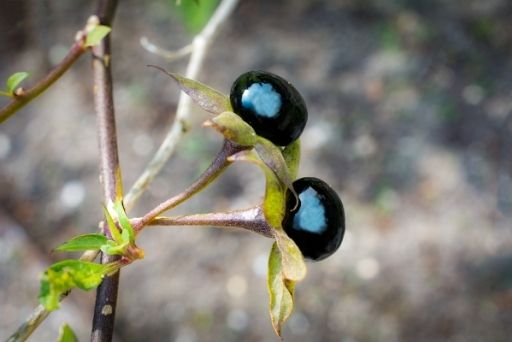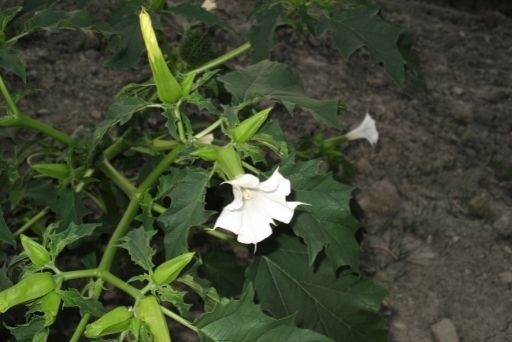Carl Liche, a German explorer, mentioned in his article in 1878 that on exploring the Madagascar region, he saw a woman from the Mkodo tribesmen group drinking nectar from a weird-looking pineapple tree. And feeling the presence of the woman around the tree, it wrapped its branches around her and ate her up. Even though such plants do not exist in the present world, there are many current poisonous plants. Below mentioned is a list noting the top 10 most dangerous plants of the world:
- Nerium Oleander
The plant is considered one of the deadliest in the world because it has toxins present in every part. Oleandrin and Nerin are two of the most poisonous toxins present in the plant. Nerium Oleander’s toxins are so deadly that if human beings eat honey made by the bees who have digested the nectar of Nerium Oleander, they can be poisoned. Consumption of oleander leaves has also led to death in human beings.
- Water Hemlock or Cicuta
This plant is primarily found in the swampy areas of America and possesses deadly toxin in its white roots, which have often been confused with parsnip. The toxin present in the root of the plant is known as Cicutoxin. It causes nausea, vomiting and painful conversions in human beings. If an individual survives this poisoning experience, suffers from perennial health conditions like amnesia. The plant has also poisoned livestock. The grazing animals often eat the roots of the plants while feeding on them during the spring season since the ground is soft. As a result, they end up ingesting both the roots and the foliage of Cicuta.
- Rosary Pea or Abrus Precatorius
The Rosary Pea possesses red and black seeds that are often used in making important jewellery and are widely known as Rosary Prayer Beads. These red and black seeds contain the poison named Abrin. However, the state is considered to be utterly safe till its outer coating is scratched. This plant is a creeper and can affect an entire region if not kept in check. About 2.5 milligrams of the abrin poison present in the Rosary pea can kill a human being; this plant contains more than the mentioned limit. Symptoms of inhalation and poisoning actual Rosary pea are fever, difficulty in breathing, and nausea.

- Deadly Nightshade or Atropa Belladonna
This plant is found growing scarcely In The Wild regions of the earth and is not cultivated. Unlike the previously mentioned plants, the Atropa Belladonna is considered entirely safe for animals and wants but highly deadly to human beings. It affects the nervous system resulting in muscle paralysis of the involuntary nervous system. Symptoms of being affected by the poison of Atropa Belladonna are blurred vision, dilated pupils, headache sensitivity to light confusion etc. While consuming 2 of these can kill a child, consuming 10 to 20 of them is capable enough to kill an adult.
- Castor Oil Plant
This plant was first found in Africa and is now available across the world. It contains the poisonous toxin known as ricin present in heavy concentration in the plant’s seed coating. Getting poisoned through the castor oil plant seed can lead to vomiting, abdominal cramps, nausea, kidney failure and internal bleeding.
- Taxus Baccata or the English Yew
These are 22 metres tall trees whose every part is poisonous except the bark of the tree. If an individual consumes either the seed or the tree leaves, it can lead to dry mouth weakness, dizziness, irregular heartbeats, and pupil dilation.
- White Snakeroot or Ageratina Altissima
The poison of this tree is believed to have caused the death of Abraham Lincoln’s mother and has symptoms like loss of appetite, vague pains, bad breath, muscle stiffness, constipation and vomiting among humans. It also causes poisoning in animals.
- Aconite or Aconitum
The plant is lovely to look at, and as a result, backpackers or gardeners often confuse its roots with being the roots of white radish. Simply touching this plant can lead to numbness, heart diseases and tingling. If consumed, it can lead to vomiting, burning sensation in the mouth, increased salivation, changes in blood pressure, diarrhoea, and death.

- Jimsonweed or Datura Stramonium
The plant is believed to have medicinal properties like acting as an analgesic during bone setting for surgery and help in reducing asthma symptoms. But a slightly higher dose of the same alkaloids with medicinal properties can lead to hospitalization and even death.
- Manchineel or Hippomane Mancinella
Found across Central America Caribbean Florida Everglades, the sap present in the twig of this plant can cause skin irritation, loss of voice, coughing etc. Consumption of these apple-like fruits can lead to swelling of the throat, gastrointestinal problems, blisters in the mouth etc.





























